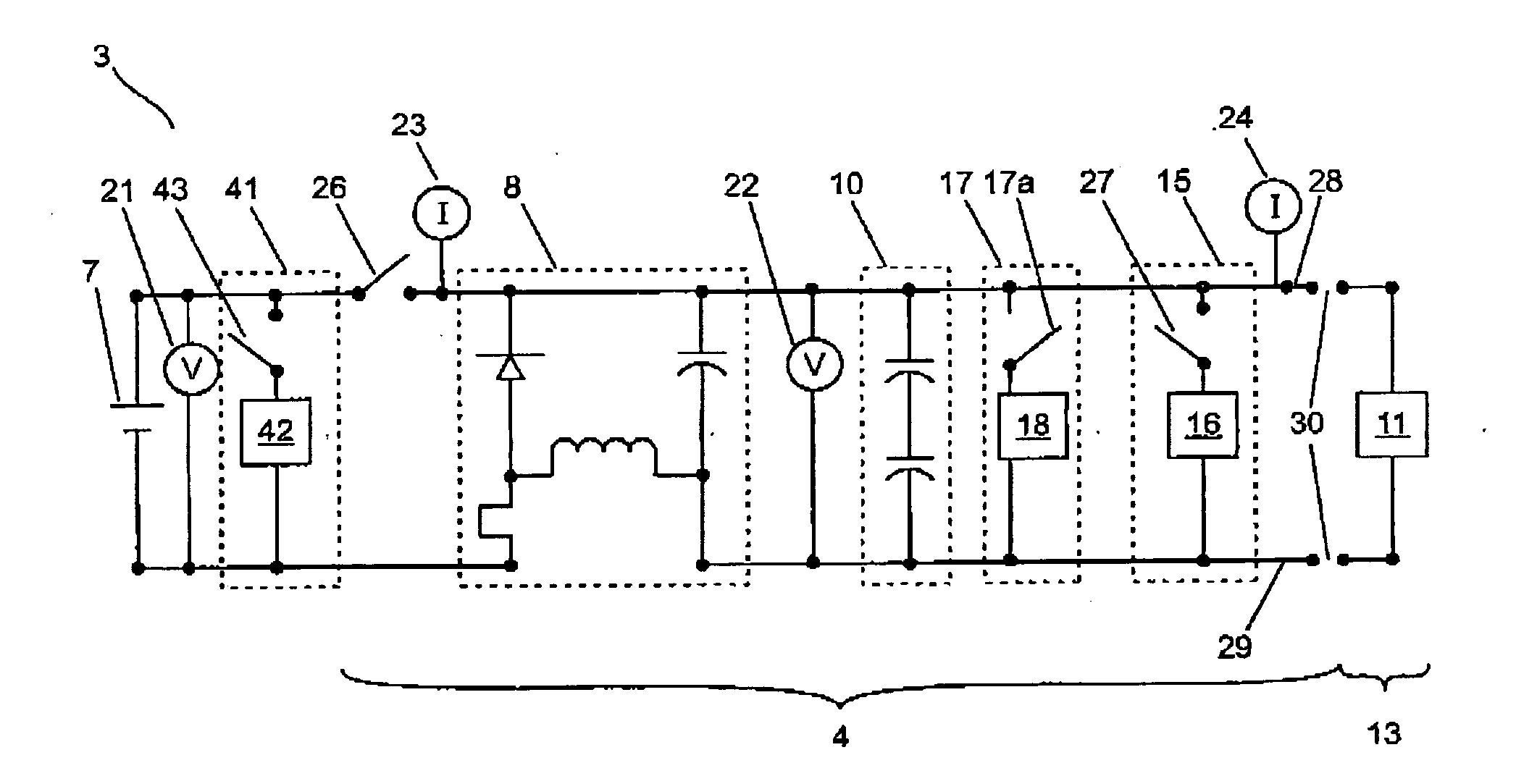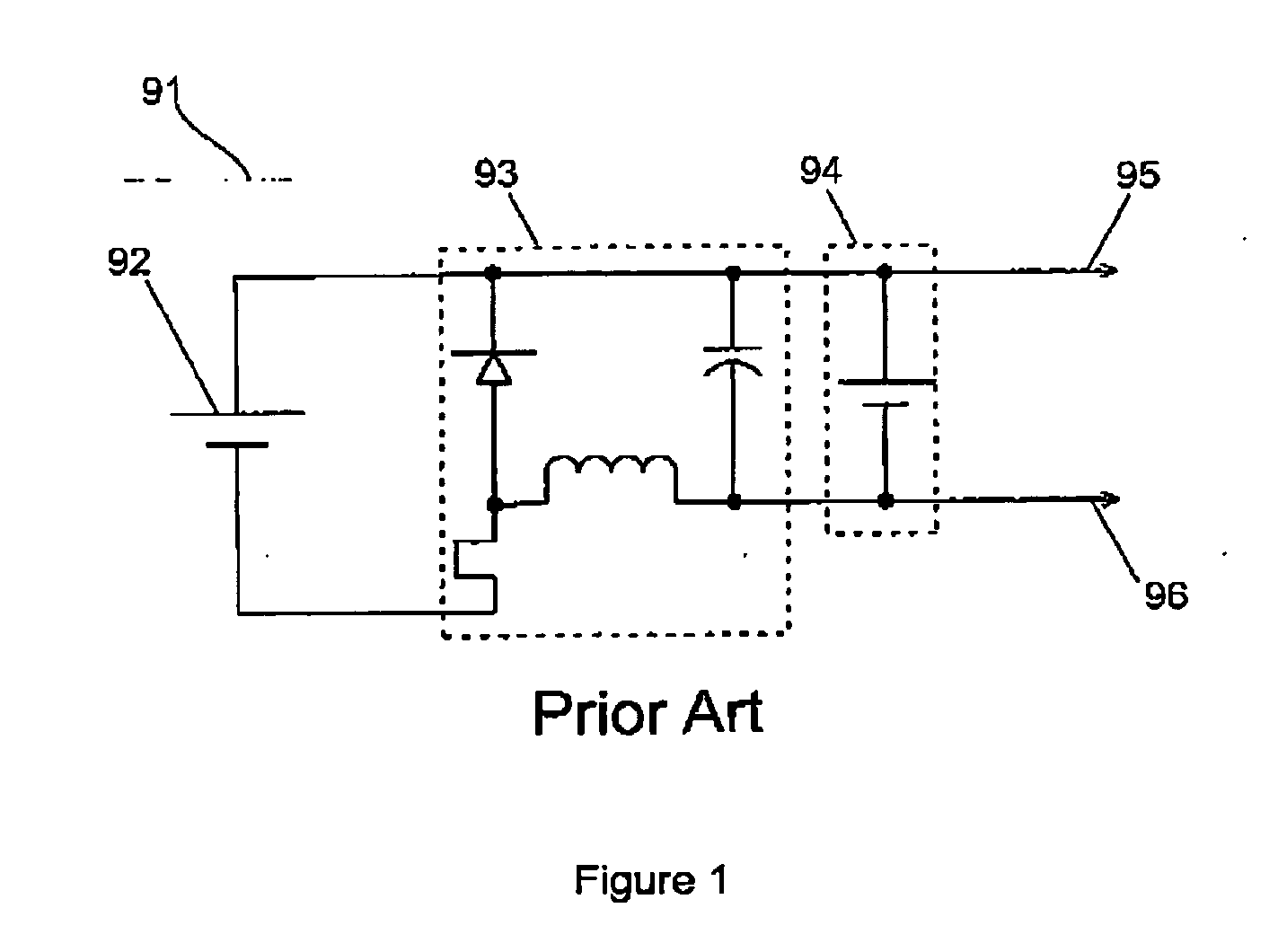Capacitor bank for electrical generator
a technology of capacitor bank and electrical generator, which is applied in the direction of capacitor collector combination, electrochemical generator, fixed capacitor, etc., can solve the problems of increasing wear and tear on the fuel cell system components, reducing the operating life of the system, and it is difficult to precisely determine when and how much the battery needs to be charged by the fuel cell stack
- Summary
- Abstract
- Description
- Claims
- Application Information
AI Technical Summary
Benefits of technology
Problems solved by technology
Method used
Image
Examples
Embodiment Construction
Generator Components
[0035] Referring to FIG. 2 and according to one embodiment of the invention, an electrical power generator 3 is provided which comprises a fuel cell stack 7 and a double-layer capacitor bank 10 electrically coupled in parallel. The fuel cell stack 7 electrochemically reacts gaseous hydrogen fuel supplied from a fuel tank (not shown) and oxygen from ambient air to produce electricity. By-products of the reaction include water and heat. The fuel cell stack 7 comprises a plurality of a proton exchange membrane (PEM) type fuel cells; a suitable such fuel cell stack is the Mark 902 stack manufactured by Ballard Power Systems. However, it is within the scope of the invention to use other fuel stacks as is known in the art.
[0036] As discussed in detail below under the heading “Capacitor Bank”, the capacitor bank 10 is made up of a plurality of double-layer capacitors connected in series to provide a capacitor voltage sufficient to meet the voltage requirements of a l...
PUM
 Login to View More
Login to View More Abstract
Description
Claims
Application Information
 Login to View More
Login to View More - R&D
- Intellectual Property
- Life Sciences
- Materials
- Tech Scout
- Unparalleled Data Quality
- Higher Quality Content
- 60% Fewer Hallucinations
Browse by: Latest US Patents, China's latest patents, Technical Efficacy Thesaurus, Application Domain, Technology Topic, Popular Technical Reports.
© 2025 PatSnap. All rights reserved.Legal|Privacy policy|Modern Slavery Act Transparency Statement|Sitemap|About US| Contact US: help@patsnap.com



